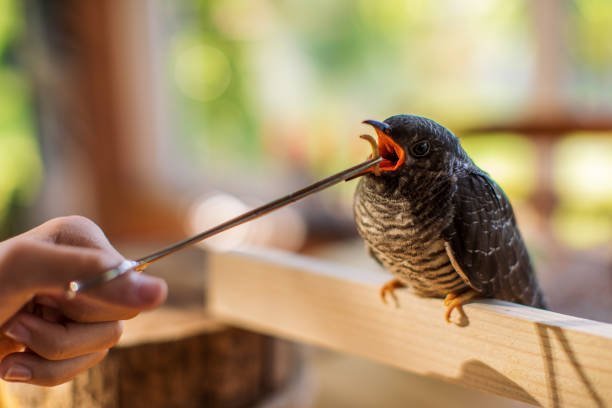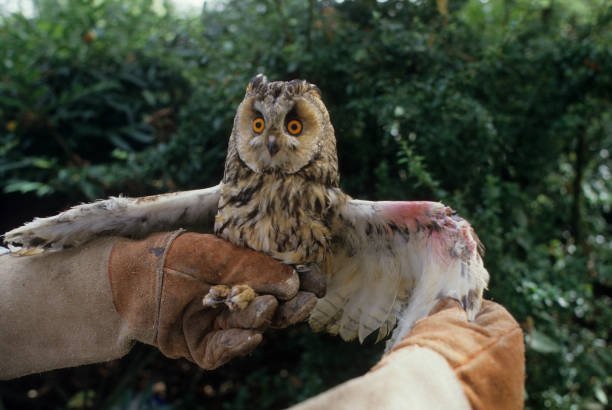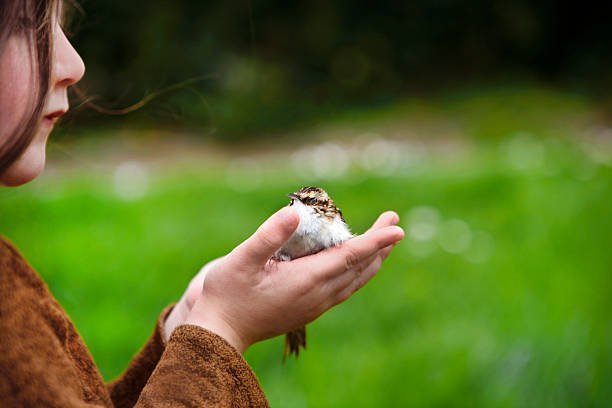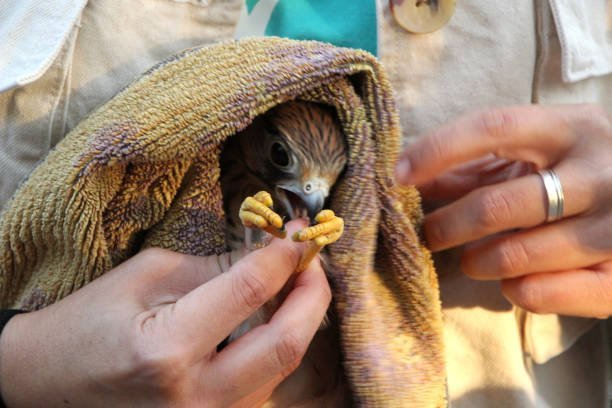Which Tools and Supplies Are Essential for DIY Bird Rescue Efforts?

Introduction:
In this article, we embark on a journey into the world of DIY bird rescue efforts, focusing on a critical aspect that often determines success: the essential tools and supplies needed for effective avian rescue and rehabilitation. Birds, whether injured, orphaned or in distress, may require immediate assistance from caring individuals who are willing to step in and offer aid.
In this guide, we will explore the vital equipment, supplies, and resources required for DIY bird rescue efforts. From basic tools such as nets and carriers to specialized items like heating pads and hydration solutions, we will delve into the comprehensive toolkit necessary for providing injured or vulnerable birds with the best chance of recovery.
By understanding and assembling the right tools and supplies, individuals can play a crucial role in safeguarding avian welfare, ensuring that these magnificent creatures have a fighting chance to thrive once more in their natural habitats.
Basic Tools for Capturing and Handling Birds
Essential tools for capturing and handling birds include nets, gloves, and carriers. Nets, with fine mesh to prevent injury, are useful for capturing small to medium-sized birds safely. Gloves, made of a soft and breathable material, protect both the rescuer and the bird from injury and reduce stress during handling. Carriers, designed with ventilation and secure closures, provide a temporary containment solution for transportation to a safe location or a rehabilitation center.
It’s crucial to approach birds with care and gentle movements to minimize stress. Additionally, a towel or cloth can be used to cover the bird’s eyes, reducing visual stimuli and calming the bird during capture and transport. These basic tools ensure that the bird’s safety and welfare are prioritized during rescue efforts.
Specialized Tools for Feeding and Hydration
Specialized tools are necessary for providing appropriate nutrition and hydration to rescued birds. Feeding syringes or pipettes with fine tips are essential for hand-feeding baby birds or those unable to eat independently. The use of specialized diets, such as baby bird formula, ensures that young or weakened birds receive the nutrients they need.
Hydration tools like small dishes or syringes with drip tips are crucial for providing water to dehydrated birds. Electrolyte solutions may be required in cases of severe dehydration. Additionally, heating pads or warming devices are used to maintain a warm environment for nestlings or cold-stressed birds.
Properly administering food and fluids with these specialized tools is vital to the bird’s recovery. Careful monitoring of feeding and hydration is essential to prevent overfeeding or dehydration and ensure the bird’s nutritional needs are met.
Comfortable Temporary Habitat
When rescuing a bird, providing a safe and comfortable temporary habitat is vital for its well-being. This habitat should mimic the bird’s natural environment as closely as possible. A secure enclosure, such as a crate or cage with appropriate ventilation, is necessary to prevent escapes or injuries.
Providing perches, branches, or appropriate substrates within the enclosure allows the bird to perch and rest comfortably. Nest boxes may be required for young birds or those that need a sheltered space. Bedding material, like clean towels or newspapers, should be used to maintain a hygienic environment.
Properly addressing the bird’s physical and psychological needs, such as offering hiding spots and visual barriers, reduces stress and promotes recovery. Creating a temporary habitat that meets these criteria is essential during the rescue and rehabilitation process.
By understanding and utilizing these basic and specialized tools, rescuers can ensure the safety, comfort, and care of birds in need. These tools are fundamental to DIY bird rescue efforts, providing the necessary support for capturing, handling, feeding, and creating a temporary habitat for avian patients during their journey toward recovery and, eventually, release into the wild.
First Aid and Medical Equipment for Initial Care
When undertaking DIY bird rescue efforts, having first aid and medical equipment on hand is essential for providing immediate care to injured or distressed birds. This includes items such as sterile gauze, antiseptic solution, and adhesive bandages for treating wounds and injuries. Tweezers can be useful for removing foreign objects from a bird’s plumage or skin.
A digital thermometer may be employed to monitor the bird’s body temperature, especially if it has been exposed to extreme weather conditions. It’s crucial to have a container for safe transport, such as a well-ventilated cardboard box or pet carrier, to keep the bird secure and reduce stress during transport to a rehabilitation center or while awaiting professional care.
First aid equipment ensures that immediate needs are addressed, reducing the risk of infection or further injury. However, it’s essential to consult with a wildlife rehabilitator or veterinarian for more advanced medical care, as some injuries may require specialized treatment.
Specialized Supplies for Feeding and Hydration
Feeding and hydration are critical aspects of bird rescue and rehabilitation. Specialized supplies include feeding syringes with fine tips for hand-feeding, especially for nestlings or birds that cannot eat independently. High-quality bird formula is essential for providing the necessary nutrition to young or weak birds.
For hydration, small dishes or syringes with drip tips are used to offer water to dehydrated birds. In severe cases of dehydration, electrolyte solutions may be required. Additionally, warming devices like heating pads help maintain a warm and comfortable environment for birds that may be cold-stressed.
Properly using these specialized supplies ensures that the bird’s nutritional and hydration needs are met. However, it’s essential to follow guidelines provided by wildlife rehabilitators or avian experts, as improper feeding or hydration can have adverse effects on the bird’s health.
Safety Gear and Protective Equipment
Safety gear and protective equipment are crucial for safeguarding both rescuers and the birds during DIY rescue efforts. Gloves made of a soft and breathable material protect the hands from potential bites or scratches, reducing the risk of injury. These gloves also minimize stress during the handling of birds.
Eye protection, such as safety goggles or glasses, may be necessary when handling certain species of birds that can produce fine sprays of fluids. This protective gear shields the eyes from potential exposure to contaminants or irritants.
Respiratory protection, such as face masks, is vital when dealing with birds that may carry zoonotic diseases or if there is a risk of inhaling particulates during the rescue process.
Properly using safety gear and protective equipment ensures the safety and well-being of both the rescuer and the rescued bird. It minimizes the risk of injury or exposure to potential hazards, allowing for more effective and safe rescue efforts.
By equipping themselves with these essential tools and supplies, individuals engaged in DIY bird rescue efforts can provide initial care, address immediate needs, and ensure the safety and well-being of both the rescuer and the avian patient. While these resources are invaluable for initial care, it’s crucial to consult with wildlife rehabilitators or avian experts for guidance on more advanced medical treatment and long-term rehabilitation.
Conclusion:
I hope this comprehensive guide on the essential tools and supplies for DIY bird rescue efforts has been enlightening and informative. The commitment to rescuing and rehabilitating birds in distress is a noble endeavor, and being well-prepared is key to the success of these efforts.
From first aid and medical equipment to specialized supplies for feeding and hydration, these resources are vital in providing immediate care and addressing the most pressing needs of injured or vulnerable birds. Safety gear and protective equipment ensure the well-being of both the rescuer and the avian patient, reducing the risks associated with handling and caring for birds.
While these tools and supplies are invaluable for initial care, it’s important to remember that professional guidance and expertise are often necessary for the successful rehabilitation and release of rescued birds. Wildlife rehabilitators and avian experts can provide essential knowledge and resources to ensure the birds receive the best possible care throughout their journey to recovery and, ultimately, their return to the wild.










Post Comment